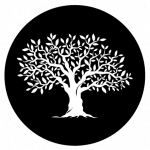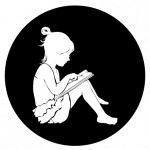Zochrot

Zochrot
Right of Return and the Jewish National Fund
Palestinians have been fighting for the right to return to their homes and property for seventy years. The right of return is enshrined in the Universal Declaration of Human Rights, and precedents for it go back to the ancient philosophers. Zochrot is working for a vision of the right of return for Palestinians that makes Israel a homeland and better place for Palestinians and all Israelis. Here’s what you should know about the right of return and what you can do so that together we can rise up.
Organization
Zochrot (‘remembering’ in Hebrew) is an NGO working since 2002 to promote acknowledgement and accountability for the ongoing injustices of the Nakba, the Palestinian catastrophe of 1948, and the conceptualization of the Return as atonement for the Nakba and a chance for a better life for all the country’s inhabitants.
Zochrot envisions Return as an extended and multidimensional process, which includes not only the physical return of refugees to this country, but also their appropriate and dignified integration in an equal, joint Palestinian-Jewish society. Under this expansive view, Return begins long before the actual return of refugees and continues long after the return to their homeland.
You can find Zochrot on their website at http://zochrot.org/. Or find it on Facebook at http://www.facebook.com/Zochrot and YouTube at http://www.youtube.com/user/Zochrot.
Topic
Over 5 million Palestinians (first-generation refugees and their descendants) are recorded as displaced persons as a result of the Nakba (The Palestinian Catastrophe of 1948). During and following the 1948 war, more than 600 Palestinian localities were depopulated and destroyed and approximately 750,000 Palestinians were dispossessed. Furthermore, around 35,000 persons were internally displaced in Israel among the 150,000 Palestinians who remained, according to surveys conducted by BADIL in 2003 and 2014. The majority of the internally displaced refugees still live within a few kilometres from their former villages, whilst majority of the Palestinian refugees in the neighbouring Arab countries still live within 100 kilometres of the border to Israel and are denied the right to return to their homes.
Story
Lubya Village
This story focuses on one of those ruined villages, Lubya, that was depopulated and destroyed during the Nakba, and about a genuine act of historical justice made in 2015, 67 years after the destruction of the village.
Introduction: Lubya Village
The ruined Palestinian village, Lubya, was located in northern Palestine around 10.5 km west of Tiberias. It was a typical hill village, known for their fertile lands with wheat production, olive trees and fruit groves. In 1596, the village was required to start paying taxes on their olive press, beehives, and on their goats. It was a successful village through the centuries, and was growing quickly in the 20th century, from 1,850 residents and 405 homes in 1931 to 2,726 residents and 596 homes in 1948.
But in 1948 attacks by Zionist forces on this successful village began. The first was reported on January 20th and left one villager dead. Attacks followed in February and March. The villagers fought to keep their village. When Nazareth fell on July 16th the villagers were terrified of their fate and abandoned their homes. The following morning, Israeli forces shelled the village, destroying homes, and occupied the village. One Lubya Palestinian descendant, Aissa Hajjou recalls her father saying “I hid in a tree, I was surrounded and didn’t know where to go…How they hysterically took revenge against people and houses.” Another Lubya Palestinian refugee, Amina Zu’aitier recalls the escape from Lubya: “We were walking to the north, trying to escape to Lebanon…I looked behind and saw Lubya in the distance. Its houses were in flames and smoke covered the sky. I was crying since the moment I left Lubya, but at that point, I realized that it is over, we lost everything.”
In 1949, the Israeli town of Lavi was established on the village’s lands. Additionally, the village lands were covered with the Lavi Forest and the South Africa Forest, planted by the Jewish National Fund. Ultimately, in 1965, all buildings of the village were demolished completely. Nayif Hajju summarizes the feeling of losing one’s home as they are fated to, “carry the burden of sorrow and grief for having lost our village”. Amina Zu’aitier further elaborates: “There was nothing left of Lubya; they demolished even the mosque, and the wells we used to drink from they filled with rocks and they planted trees everywhere that concealed everything”.
Lubya’s Refugees
Following the Nakba, the majority of Lubya’s refugees lived in refugee camps in Lebanon, Syria, and Jordan. Only a few families remained in what became Israel and became internally displaced persons (“present absentees” in Israeli legal jargon), mostly in the village of Dayr Hanna. After the Sabra and Shatila massacres in Lebanon many from Lubya were dispossessed a second time, now to Europe. And as a result of the civil war in Syria, some of Lubya’s refugees were killed, mainly in al-Yarmuk Refugee Camp. Most of the remaining refugees fled to Europe. The number of Lubya refugees and their descendants globally is currently estimated around 40,000.
In 1950, Israel passed the Absentees’ Property Law, which stripped the Palestinians of their properties. Muhammad Kharzoun, a refugee from Lubya, describes his state of homelessness as such: “Yes, we were all peasants, but loving one’s homeland is part of our faith and religion. It is part of our souls, it is even more precious than our souls. Whoever does not have it, has nothing.” This law was the main legal instrument used by the Israeli government to claim ownership over Palestinian land.
Jewish National Fund (JNF) Colonial Practice
The Lavi Forest, part of which is called the South Africa Forest, now covers the ruins of Lubya. The only remaining sign of life in the village is its cemetery. The humble Muslim grave markings are still present, mostly untouched by the pine trees. Refugee Hamad Jodeh said “if I didn’t love this place would I keep coming back here on my tractor all the time? They made it into a forest. To claim that there was no village here. But you can see the cactus, which proves that Arabs lived here.”
The Lavie Forest was planted by The Jewish National Fund. The JNF was created in 1901 and was dedicated to buying and settling land on behalf of the Jewish people, acquiring Palestinian land for Jewish settlement. This process includes “Judaizing” the landscape, clearing it of any trace of Palestinian presence, history, and memory. More than two-thirds of the forests planted by the JNF are located on destroyed Palestinian villages, now inaccessible, unnamed, and unkept. Today, it prides itself of being an environmentally-friendly NGO by planting trees and creating parks.
Apology and Accountability
“Transitional Justice” has been designed as a field that refers to transitions from dictatorship to democracy, or from conflict to reconciliation. In the Israeli-Palestinian context, we propose pre-transitional justice – a set of tools and strategies applied during an intractable conflict to promote transition from a culture of denial and impunity to one of recognition and accountability. Apologizing is a way to express accountability, which is the beginning of compensation – both material and symbolic.
The donations for the Lavi Forest came from South Africa in the 1960s (during Apartheid). However, (with the end of Apartheid) after discovering why the forest was planted where it was, the group StopTheJNF South Africa was formed by South African Jews in 2012 with the purpose of exposing the truth. In 2015, this group came to Lubya to apologize for their actions and to seek forgiveness from Lubya’s refugees.
Shereen Usdin, a South African StopTheJNF activist, stated in her apology: “while this forest may be an attempt to erase the memory of Lubya, there can be no denying what happened here. These stones, these graves, these wells, these cacti plants, are all bearing witness. Now as Jewish South Africans we have come here to this forest and to the ruins of Lubya in order to acknowledge and to take responsibility for this injustice”. This was a unique event which took place in May 2015, coordinated and implemented by Zochrot, attended by media, activists, the wide public and village refugees. This initiative was an important symbolic gesture, which may be the stepping stone for initiating more acts of redress and introducing the right of return for all Palestinian refugees.
For more information on the visit (including images and videos) visit the Zochrot website with the Lubya case: http://zochrot.org/en/village/49244.
Action
- First, you can watch The Village Under the Forest, a 54-minute documentary that tells the story of Lubya, the village described above. Screen it for your class, your church group, your family, your school club, etc.. You can purchase the video online for less than $8 USD, or rent it for $3 USD: https://vimeo.com/ondemand/villageundertheforest/78181601. Watch a trailer here: https://youtu.be/ISmj31rJkGQ.
- But please don’t stop with a film screening! Lubya is just one of the many destroyed Palestinian villages that have been covered with the JNF forests funded by overseas donations. If you look at these forests on Google Maps you see reviews that praise these locations for their beauty and recreational opportunities. The stories, rights, and villages of Palestinians are being buried online just as they are in real life. Alert other travelers to the true stories of the lands they are using by leaving a review on Google Maps.
We suggest you leave a 1 or 2 star review that says something like: “While this is a beautiful area, the truth is that this forest was planted over destroyed Palestinian homes and villages and is land that rightfully belongs, according to international law, to those refugees and their descendents. I encourage everyone to urge the JNF to both acknowledge and right these wrongs so that Jews and Palestinians may live in peace as neighbors.”
Lavi
You can write a review of Lavi (South Africa) Forest and tell the story of Lubya here:
https://goo.gl/maps/aV2iC1Rb1Kz
Canada
You can learn about Canada’s donations by watching:
- “Three Palestinian Villages Are Buried Under Canada Park”: https://youtu.be/98EHGWGqpsk
- “Canada Park in Israel”: https://youtu.be/yHRbR7nMxN4 part 2: https://youtu.be/NrhaglA5c_w
Then leave a review of Ayalon Canada Park at: https://goo.gl/maps/eVevSStrgCB2
Great Britain and the United States
You can watch “Stop the JNF” to learn about Brittania Park and USA Independence Park: https://youtu.be/QUrlojwSWI8
You can write a review of Britannia Park at: https://goo.gl/maps/NAEz5Gosotk
Or a review of USA Independence Park at: https://goo.gl/maps/b5GUerFcH5x
Lifta
Finally, Lifta is the only Palestinian village to not be destroyed. It is now a park, popular with Israeli citizens who like to swim in its pools. If you read the reviews they are overwhelmingly positive, with no mention of the injustice done to its owners. Watch a short video on Lifta from BADIL called “Sons of Lifta” https://youtu.be/L7afYef4bSQ, then leave a review at: https://goo.gl/maps/3spdukNt5Sp
- Share a photo of your film screening and/or Google Maps reviews on social media. Include a link to this page of the Kumi Now website along with the hashtags #KumiNow and #Kumi39.
Literature
Reflection by Archbishop Emeritus Elias Chacour
“I reached Bir’am [my home village, which had been destroyed in 1948] just at sun-up… The light grew and filtered warmly through the olive branches. Only the chirping birds and the crunch of my steps on gravel stirred the silence. All about me the ruined stone houses were solemn, ghost-like. I climbed a crumbled wall into the dimly lit shell of the church. In the parish house, swallows sheltered in the the remaining rafters. I stood frozen, dumb-struck, nearly overcome by the sense of desolation.
And yet, at the same moment, I was caught unawares by a deep sense of life. From the wrecked homes, I imagined that I heard laughter, the voices of women, men deep in conversation… In the church, beneath the empty teetering stone tower from which our bell had been taken, ‘Alleluia’ was sung by children’s voices again. It occured to me then that even bombs could never fully destroy such reverence for God and life and the land as we had felt there. … How terribly sad that men could ignore God’s plan for peace between divided brothers, even supporting one group as it wielded its might to force out the other… [We are called] to lift up, as Jesus did, the men and women who have been degraded and beaten down.”
This reflection was originally found in Blood Brothers by Archbishop Emeritus Elias Chacour, a three-time Nobel Peace Prize nominee born in the Upper Galilee.
Resources
Videos:
- “Palestinian Villages Hidden Under Israeli Forests” from Jonathan Cook: https://vimeo.com/184497845
- “Lost Cities of Palestine” from Al Jazeera World: https://youtu.be/sT22bwJ55Sw
- “Trees as Politics: JNF and Colonization in Israel” from Lia Tarachansky: https://youtu.be/9c2xkHlZKXA
- “Stop the JNF” from International Jewish Anti-Zionist Network: https://vimeo.com/63202579
- “JNF Complicity Challenged” from Alternative Information Center: https://youtu.be/y_Y5AkPPrJU
- “Introduction to Practicalities of Return” from BADIL Resource Center: https://vimeo.com/77599843
- “Practicalities of Return II: Peace without Return” from BADIL Resource Center: https://vimeo.com/132706016
Articles and Reports:
- “On the 70th anniversary of the Nakba, a look back at the Palestinian struggle for their right of return” by Mike Merrryman-Lotze and American Friends Service Community: https://www.afsc.org/blogs/news-and-commentary/70th-anniversary-nakba-look-back-palestinian-struggle-their-right-return
- “Absentee’s Property Law” from Adalah – The Legal Center for Arab Minority Rights in Israel: https://www.adalah.org/en/law/view/538
- “South Africans apologize over forest planted on Palestinian village” by Sarah Levy on The Electronic Infitada. https://electronicintifada.net/content/south-africans-apologize-over-forest-planted-palestinian-village/14494
- “The Jewish National Fund as a Colonial Entity” from the Nakba Files. http://nakbafiles.org/2016/08/31/the-jewish-national-fund-as-a-colonial-entity/.
“Palestinian Internally Displaced Persons inside Israel: Challenging the Solid Structures” from BADIL Resource Center: http://www.badil.org/phocadownload/Badil_docs/Working_Papers/Palestinian.IDPs.pdf
Follow Zochrot on Social Media











